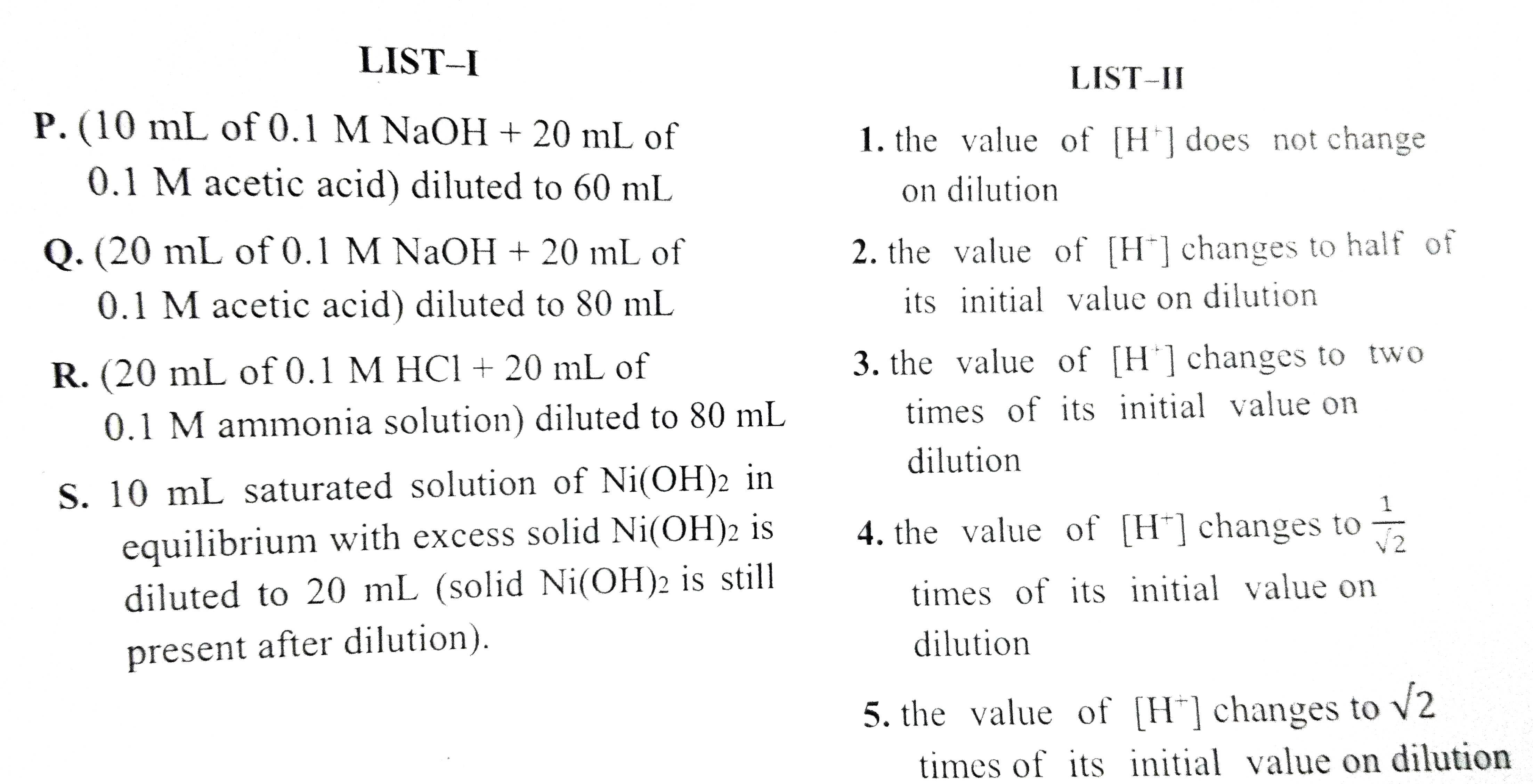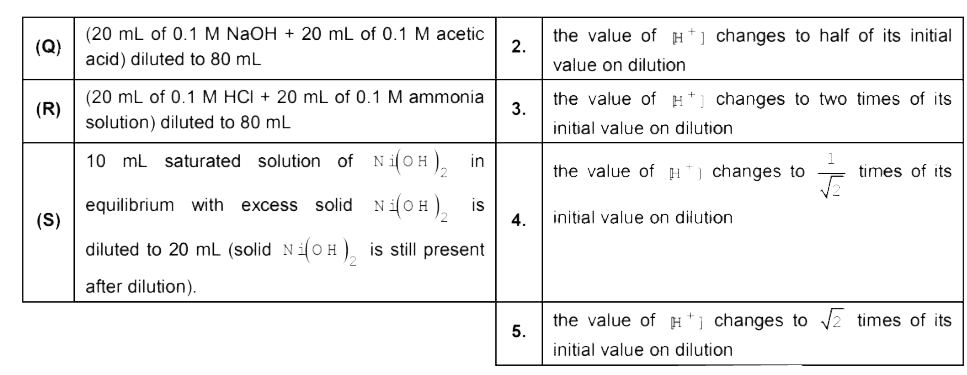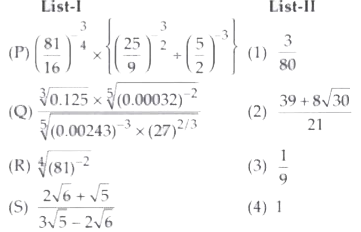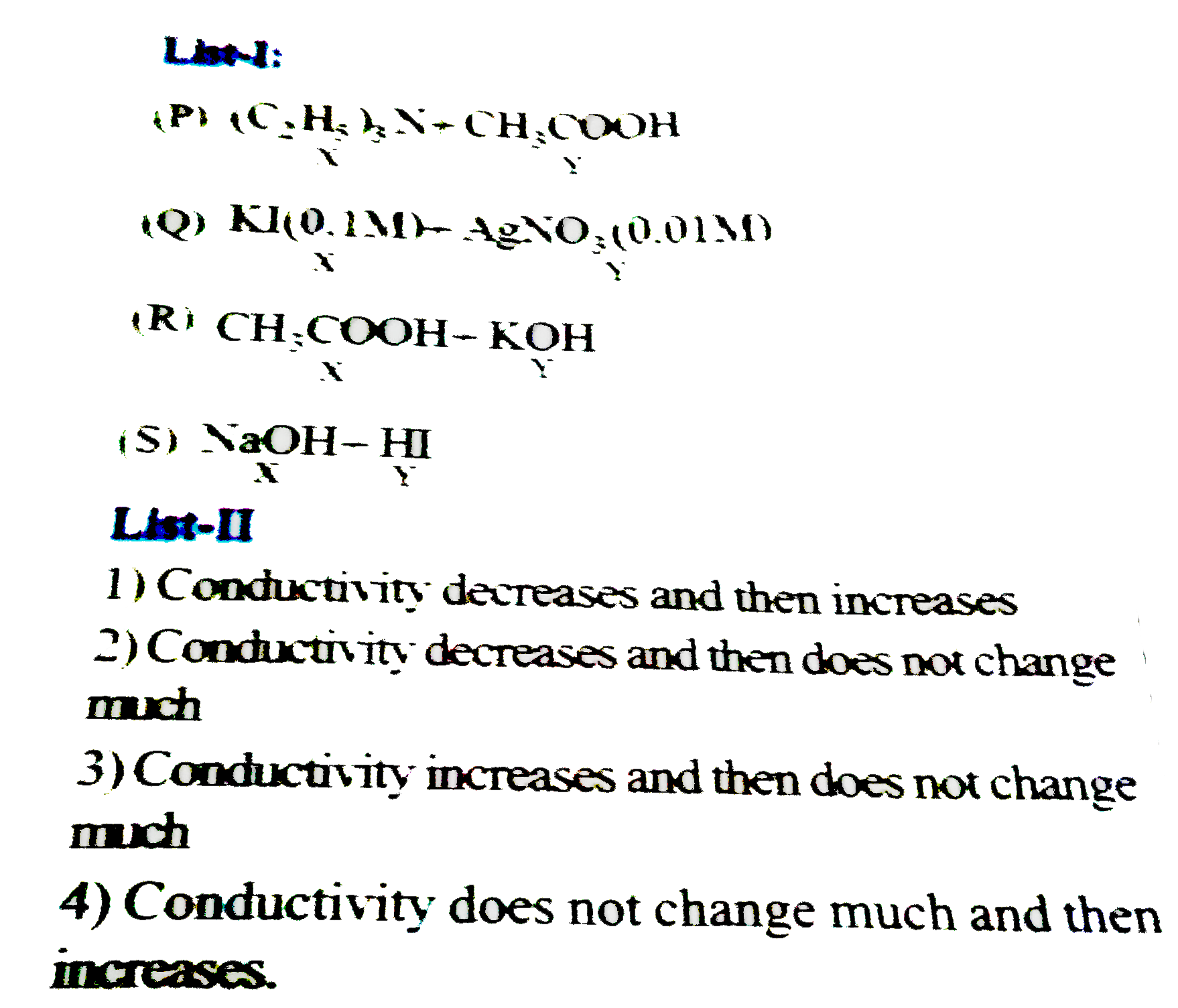Dilution processes of different aqueous solutions with water are given in LIST-I. The effect of dilution of the solution on [H+] are given in List =II.
![Dilution processes of different aqueous solutions with water are given in LIST-I. The effect of dilution of the solution on [H^+] are given in List =II.](https://d10lpgp6xz60nq.cloudfront.net/physics_images/BBP_RCM_MAC_CHE_C16_E02_058_Q01.png)
P-4, Q-2, R-3, S-1
P-4, Q-3, R-2, S-3
R-1, Q-4, R-5L S-3
P-1, Q-5, R-4, S-1
The correct Answer is:D
Topper's Solved these Questions
- BOOK - RC MUKHERJEECHAPTER - IONIC EQUILIBRIUM IN AQUEOUS SOLUTIONSEXERCISE - Problems64videos
IONIC EQUILIBRIUM IN AQUEOUS SOLUTIONS
- BOOK - RC MUKHERJEECHAPTER - EUDIOMETRY OR GAS ANALYSIS EXERCISE - PROBLEMS28videos
EUDIOMETRY OR GAS ANALYSIS
- BOOK - RC MUKHERJEECHAPTER - MISCELLANEOUS OBJECTIVE QUESTIONSEXERCISE - MCQ277videos
MISCELLANEOUS OBJECTIVE QUESTIONS
Similar Questions
Dilution processes of different aqueous solutions, with water, are given in LIST-I. The effects of dilution of the solutions on [H+] are given in LIST-II. (Note: Degree of dissociation (α) of weak acid and weak base is << 1, degree of hydrolysis of salt <<1,[H+] represents the concentration of H+ ions)
 View Solution
View SolutionDilution processes of different aqueous solutions, with water, are given in LIST-I. The effects of dilution of the solutions on [H+]. are given in LIST-II.(Note: Degree of dissociation (α) of weak acid and weak base is<<1, degree of hydrolysis of salt <<1, [H+] represents the concentration of [H+] ions)
Match each process given in LIST-I with one or more effect(s) in LIST-II. The correct option is
 View Solution
View Solution
Knowledge Check
- Question 1 - Select One
Vinegar is dilute aqueous solution of
AEthanoic acidBBenzoic acidCCitric acidDOxalic acid. - Question 2 - Select One
The osmotic pressure of a dilute solution is given by
AP=P0xBπV=nRTCπ=VRTDNone of these - Question 3 - Select One
The osmotic pressure of a dilute solution is given by
AP=PoxBπV=nRTCΔP=PoN2DΔPPo=Po−PPo
Dilution process of different aqueous solution , with water are given in List-I. The effects of dilution of the solutions on [H+] are given in List-II. (Note : Degree of dissociation (α) of weak acid and weak base is ltlt 1, degree of hydrolysis of salt <<1,[H+] represents the concentration of H+ ions)
∣∣ ∣ ∣ ∣ ∣ ∣ ∣ ∣ ∣ ∣ ∣ ∣ ∣ ∣ ∣ ∣ ∣∣ List-I List -II(P)(10 mL of 0.1 M NaOH+20 mL of 0.1 acetic acid)dilutes to 60 mL(1)The value of [H+] does not change on dilution(Q)(20 mL of 0.1 M NaOH + 20 mL of 0.1 M acetic acid)diluted to 80 mL(2)The value of [H+] change to half of its initial value on dilution(R)(20 mL of 0.1 M HCl + 20 mL of 0.1 M ammonia solution)diluted to 80 mL(3)The value of [H+] change to two times of its initial value on dilution(S)10 mL saturated solution of Ni(OH)2 in equilibrium with excess solid Ni(OH)2 is (4)The value of [H+] changes to 1√2 times of its initial value on dilutiondiluted to 20 mL (solid Ni(OH)2 is still present after dilution)(5)The value of [H+] changes to √2 times of its initial value on dilution∣∣ ∣ ∣ ∣ ∣ ∣ ∣ ∣ ∣ ∣ ∣ ∣ ∣ ∣ ∣ ∣ ∣∣View SolutionThe osmotic pressure of a dilute solution is given by
View SolutionList-II shows the degree of polynomials given in List -I.
 View Solution
View SolutionThe osmotic pressure of a dilute solution is given by
View SolutionAn aqeous solution of X is added slowly to an aqueous solution of Y as shown in List-I. The variation in conductivity of these reaction in List-II. Match List-I with List-II and select the correct answer using the code given below the lists:
 View Solution
View Solution

